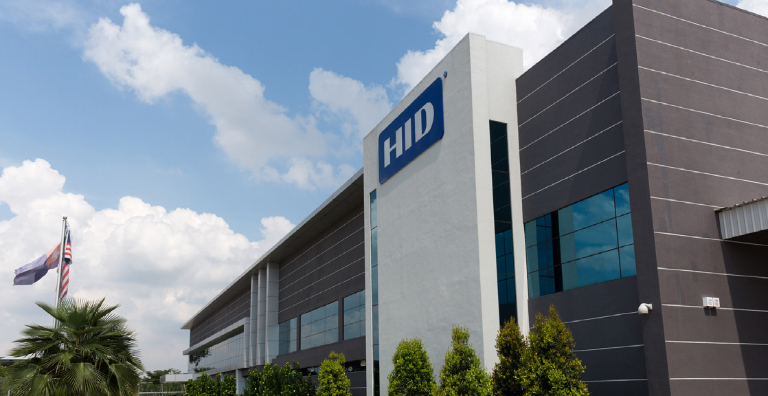Trends in restrictions and workplace closures vary across the world. While the nature of work changed for some, with hybrid and remote positions becoming more normalized, many employees were deemed essential and have continued to keep critical materials and services flowing, from healthcare and agriculture to transportation and manufacturing. In Malaysia, mapping estimates showed that up to 65 percent of workers remained on site. For that reason, ensuring safety in the workplace has remained a high priority for both policy makers and organizations.
Many organizations stepped up to the challenge to protect employees, pivoting quickly to adapt best practices and technologies. Rather than extinguishing the spirit of innovation, the pandemic necessitated new ways and approaches to remain resilient and to balance the health crisis alongside productivity. HID Global itself was one of these organizations whose employees were crucial during a time of disruption. We operate international offices with over 4,000 employees supporting more than 100 countries. This includes Johor, Malaysia, where 700 employees produce top-quality RFID tags, cards and in-lays from two locations.
Contact Tracing Protocols and COVID-19
The development of new models for more efficient and effective approaches and contact tracing protocols have been underway for more than 40 years. Most methods are notoriously manual, labor intensive, risky and slow. But when the COVID-19 pandemic began, companies around the globe prepared their facilities to be safe and compliant workspaces for employees. HID was no exception, with our Malaysia manufacturing location focused on maintaining a safe work environment.
Early protective measures were implemented to screen employees for possible infection and to mitigate the spread of the virus, including the use of temperature checks, face masks, sanitizing, social distancing, cohort scheduling, as well as quarantine measures for those who tested positive. However, standard measures did not prove to be enough. The contact tracing process proved challenging due to manual use of CCTV footage in identifying individuals who needed to be interviewed to estimate exposure. Even more, conducting these face-to-face interviews introduced additional exposure risk. Rather than accepting the limitations of the current system, the team in Johor acted on the need for a contact solution that not only maintained privacy but could be implemented quickly and utilized effectively.
How HID’s Innovation Lab Enabled a Solution to Fast Track Employee Safety Amid COVID-19
HID Global had developed a digital social distancing and contact tracing solution leveraging the same condition monitoring infrastructure that many customers already utilized to assess the health and performance of equipment. In fact, the Johor factory had already deployed BluFi™ Gateways and the Bluzone™ dashboard as a part of its own condition monitoring program. Only the addition of beacons would be needed. This meant that our Malaysia operations could implement automated physical distancing and contact tracing rapidly and easily.
Knowing that other organizations were facing similar concerns, the HID Malaysia facility was in a unique position to proactively validate HID Location Services for Workplace Safety as an essential solution to containing the threat of COVID-19. The team worked quickly to distribute Bluetooth® Low Energy (BLE) HID BEEKS™ Aware fobs that employees hang on their lanyard or clip on their belt or shirt. Each fob is pre-configured for detection and alerts based on recommended distancing guidelines and is assigned a unique serial number identified via a QR code label on the back. It also maintains privacy by using a trusted HR process to securely map the IDs to names.
The Result: Contact Tracing Time Reduced From Days to Hours While Employee Trust Improves
The fobs sent signals to the more than 60 previously installed BluFi Gateways, tracking the wearer’s position and triggering audio and visual alerts when employees stood too close together for too long. That data was reported in real-time, via the cloud to the HID Bluzone dashboard, providing a full digital trail of employees’ whereabouts and work interactions. Because the solution accurately traced historical movements throughout the facilities, including the location and duration of interactions, anyone who was exposed could be quickly located, and isolation protocols could be immediately initiated to mitigate the virus’ spread.
The automated process helped prevent COVID clusters. A positive test started the protocol, and it took less than two hours to contact trace all 700 of our Malaysian employees, reducing contact tracing times by almost 96 percent and allowing our teams to quickly enact additional safety measures. Exposed personnel were able to self-quarantine, significantly reducing the risk of additional exposures. Employees reported feeling safer with the contact tracing solution in place and reported that the fobs provided a sense of control and awareness.
What started as a Smart Buildings solution ultimately became an effective response to a public health emergency, providing streamlined health and safety management. What insights could help your organization more effectively manage physical distance and contact tracing at your own facility? Read more about the HID Location Services for workplace safety implementation.
Richard Aufreiter, VP Product Marketing, HID Global is driving HID’s diverse and flexible portfolio of identification technologies across frequencies and applications. With vast expertise in RFID/NFC, encryption systems, PKI, biometry and mobile security, he brings over 20 years of leading product management and engineering in the IT and RFID industry.
